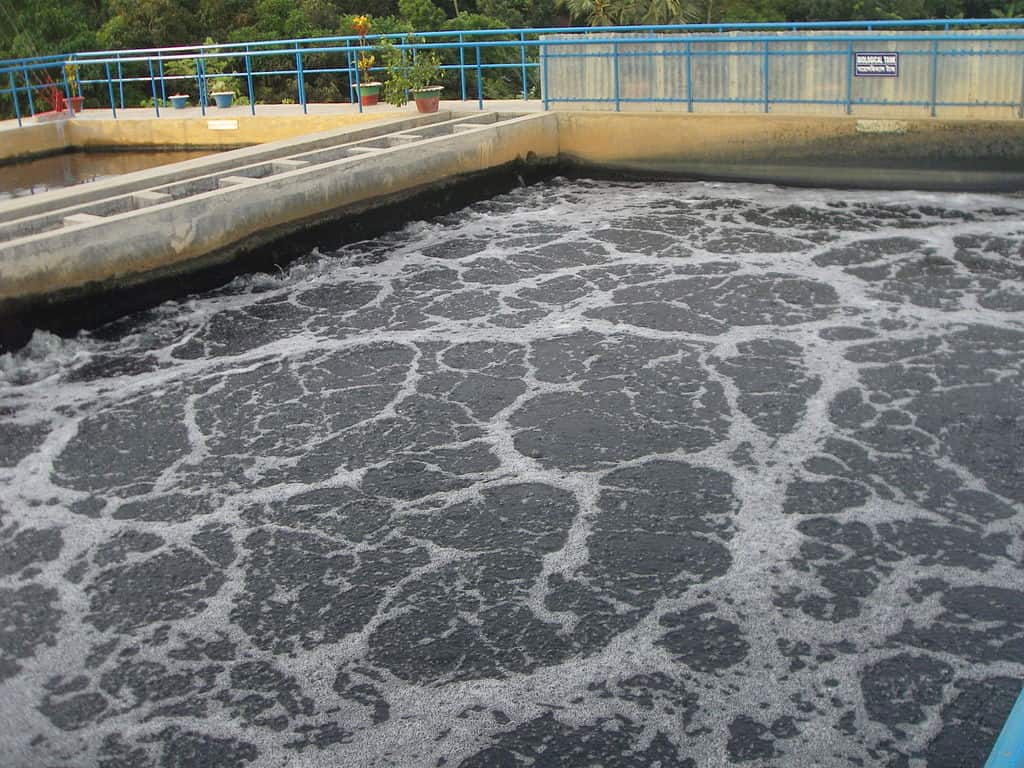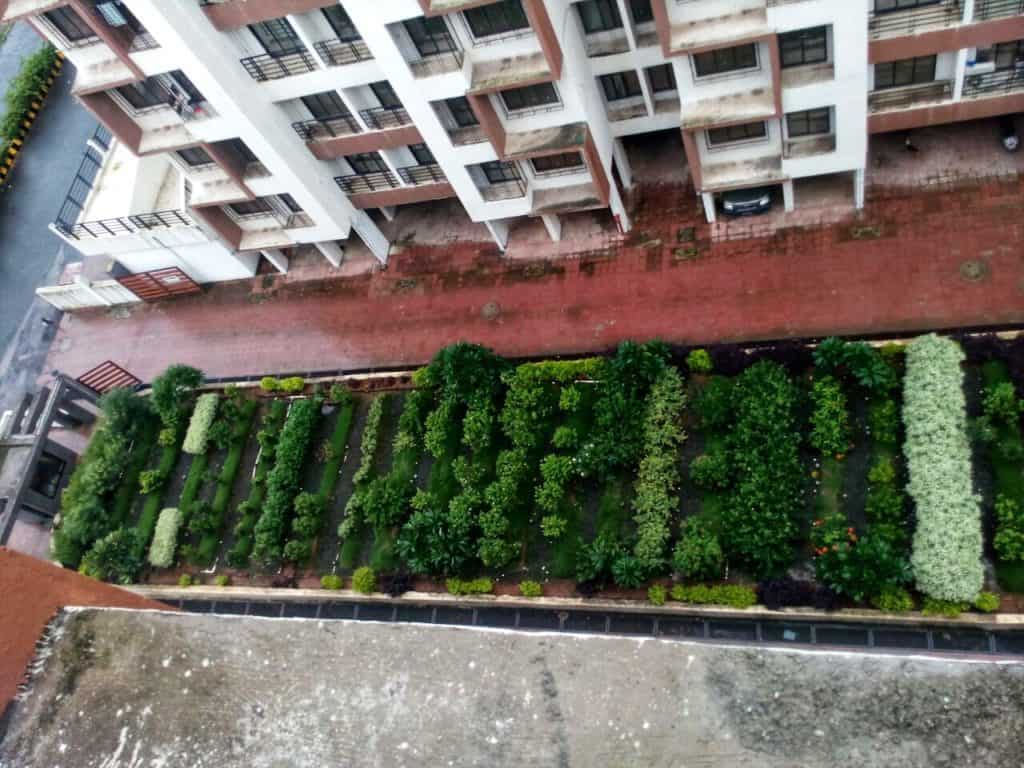Private and green sewage treatment plants (STP) are slowly gaining prominence. With the growing threat of water scarcity, climate change and pollution, Mumbai is grappling for ways to meet current and future demands of water in the city, and one avenue that has emerged is recycling the water from sewage treatment plants (STP). They treat wastewater at the source and replace as much as half the water requirement of a housing society.
How much fresh water is wasted daily for activities that can be carried out using recycled water?” asks Prasad Khale, senior conservation officer at the NGO Conservation Action Trust (CAT). Although non-potable, treating wastewater at source and reusing it for flushing, gardening and washing vehicles can save as much as a half a society’s water needs. “Large city-wide STPs don’t treat wastewater to the tertiary level, and whatever water is treated is ulitmately discharged into the sea. Recycling this water is energy intensive, as it has to be pumped from the centralised system to the entire city,” says Prasad.
Currently, it is mandatory for new and upcoming housing projects in Mumbai with a build-up area of more than 2,00,000 sq ft to have a private STP of their own. The same is true for complexes with a built up area of 4,30,000 sq ft in Thane, although there is a push to reduce the area to match Mumbai’s. The Brihanmumbai Municipal Corporation (BMC) also promises a 5% tax rebate for societies with an STP.
But an STP can be very expensive. Hiranandani Communities in Kandivali a society with 400 flats spends Rs 1-2 lakh per month on the running and maintenance of their STP. The cost is divided in the maintenance bills of the flats says Sagar Vira, a resident. Considering the cost of municipal water is Rs 5.94 for every 1000 litres, the society is not saving any money by recycling water.
The running operational costs are a deterrent for many residents and societies. 40% of housing complexes that do have STPs get poor use out of them of do not use them due to the maintenance needed, estimates the Maharashtra Societies Welfare Association (MSWA). While the BMC has threatened to cut 25% of the water supply of societies with non-functional STPs, there are no reports or accounts of this being done.
But an eco-friendly alternative exists: green STPs.

Benefits of a green STP
Conventional STPs use aerobic bacteria, which need oxygen, to disintegrate the waste in sewage. Because they need a constant supply of oxygen, they require moving aerators.
Both conventional and green STPs use bacteria to disintegrate the water in sewage. But conventional plants use aerobic bacteria, which need a constant supply of oxygen. The aerators that supply this oxygen are made of many moving parts and work on electricity, ramping up maintenance costs and number of parts present. All of this leads to an increase in cost and maintenance to combat the wear-and-tear. Most of the plant will need replacing bit-by-bit in a span of 10 years.
Anaerobic STPs, on the other hand, use bacteria that do not require oxygen. These do not require electricity in their running, except in the pumping of water to the plant, and hence are called green or bio STPs. Their electricity utilisation is around 1/3rd to 1/5th of a conventional aerobic plant. Because they have fewer parts than a conventional STP, they require considerably less maintenace and the operational costs are significantly lower.
But anerobic STPs are of many kinds. One variant runs on soil biotechnology, treating the water using a mix of different soils, worms and bacteria. The technology was developed by IIT-B professor Chandrashekhar Shankar, who now offers it through his company Vision Earthcare.
Another type uses biomimicry, recreating the process in a cow’s stomach. ECOSTP offers such an STP, using bacteria from cow dung in multiple stages to break down the waste till the water is clean. Many other variants of green STPs are cropping up, using different technologies that are eco-friendly.
Read more: Explainer: Where does sewage in Mumbai go?
Steps and requirements of a green STP
1. Typically, the developer installs an STP for the society during construction or redevelopment. Doing so has its advantages, as it means the layout, piping, electromechanical and civil work is embedded in the design of the buildings. The capital cost of the facility is also included in the whole cost. The builder takes care of the maintance, administration and cost of the STP till the society is formed, after which it is tranferred to them.
But often, to skimp on expenses, builders opt for cheaper STPs without ensuring reliability or performance. The lack of an industry regulatory body, as there is with other electrical applicances like ACs, makes choosing a risky endeavor, and allows for subpar models to proliferate. Most builders do not opt for green STPs, increasing the society’s operational costs in the long run.
The first step for an established society to acquire a green STP is inquiring with companies providing them. After a site visit, the company will furnish them with exact details, design, work and space needed and the cost based on the society’s needs and the particular STP’s technology.
2. Each flat usually consumes half a kilolitre of water daily (kld), and the number of flats in a society will decide the capacity of the plant needed. An STP for a housing complex with 1,000 flats, with a capacity of 500 kld, will cost approximately Rs 90-110 lakhs, although this will differ depending on the type and technology used by the STP. This brings the cost per flat to approximately Rs 10,000.
As the size of the plant decreases, however, the cost reduces at a slower rate. So for a society with 100 flats, an STP with a 50 kld capacity will cost Rs 25-30 lakh. But the burden on each flat will increase to Rs 30,000.
A larger society with 400 flats will need an STP with a 200 kld capacity, costing around Rs 70-80 lakh.

3. Each STP will require different amounts of space, depending on the size and type of the STP.
Green STPs typically need more space than conventional STPs, but unlike the latter, the space can be reused. A conventional STP will need a cordoned off area for the equipment, but the area needed for a green STP can double as open space or a garden. Vision Earthcare requires 60 sq metres for a 100 kld plant, which can serve 200 flats. ECOSTP, which has come up with ways to hide the main sewage chamber under buildings and roads, needs 37 sq metres for the same, calculated through its space calculator.
4. Apart from treating sewage, STPs extract the physical sludge and dirt that is part of wastewater. But the sludge collected from housing societies by green STPs is minute, and only needs to be cleaned once in a few years. A housing society in Virar which has installed an STP from Vision Earthcare carries out this cleaning process every 1,000 days, the contents of which they give to the municipal corporation and can be used as manure.
5. After an STP is installed and set up, the society will have to employ people or an agency to take care of the plant on a day-to-day basis. Here, too, the disparity between a conventional STP and green STP are stark.
Conventional STPs require a lot more manpower to manage each aspect of the plants working. Hirandanani Communities, for example, employs four people over two shifts in a day through an agency.
Green STPs, on the other hand, require a lot less personal and proffessional maintenance and are more readily automated. A person is needed only for a few hours in a day, after which they usually either work in the society for other jobs or at other STPs in the area. Regualr water checks and inspections are required.
Some green STPs use an activated sand and charcoal filter for post-treatment, and this requires changing twice a month for optimal treatment. This increases the cost and maintenance needed, or the treatment quality suffers.
This explainer is part of a series on ‘Explainers and Information Resources for Mumbaikars’ supported by a grant from the A.T.E. Chandra Foundation.